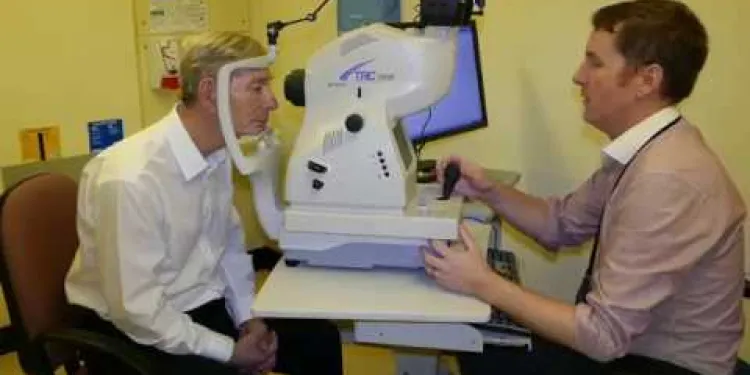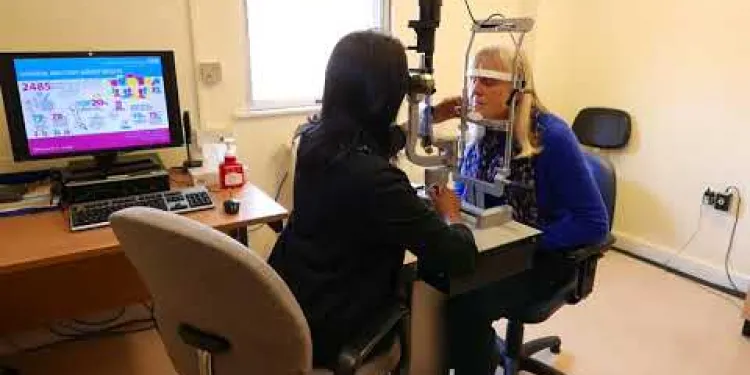
Find Help
More Items From Ergsy search
-

Judicial Appointments Under Scrutiny as Diversity Reports Spark Debate
Relevance: 100%
-

MPs Seek Judicial Review Over Voting Age Reduction
Relevance: 50%
-

Judicial Review Sought Over NHS Data Sharing Agreements
Relevance: 48%
-

What are diversion programs for drug offenders?
Relevance: 45%
-

Debate Intensifies Over Welfare Reforms Impacting Disabled Citizens
Relevance: 36%
-

New Asylum Seekers Legislation Sparks Nationwide Debate
Relevance: 34%
-

Pension Proposals Spark Debate on Retirement Age and Benefits
Relevance: 33%
-

How do I book an appointment for the flu vaccine?
Relevance: 30%
-

How should I prepare for a Botox appointment?
Relevance: 29%
-

Can I get a dentist appointment on the NHS?
Relevance: 29%
-

What happens if I miss my NHS dental appointment?
Relevance: 29%
-

Your Ultrasound Appointment
Relevance: 29%
-

A Radiotherapy appointment in east and North Hertfordshire
Relevance: 28%
-

Employment Tribunal Cases Surge Amidst Gig Economy Debate
Relevance: 28%
-

What should I bring to my NHS dental appointment?
Relevance: 28%
-

Can children get NHS dentist appointments?
Relevance: 28%
-

How long will I have to wait for an NHS dental appointment?
Relevance: 27%
-

Derbyshire Diabetic Eye Screening - Your Screening Appointment
Relevance: 27%
-

Derbyshire Diabetic Eye Screening - Assessment Clinic Appointment
Relevance: 27%
-

Are all dental appointments free on the NHS?
Relevance: 26%
-

Autism Assessment - What Happens in Your Appointment
Relevance: 26%
-

Can I get an emergency NHS dental appointment?
Relevance: 25%
-

Post Menopausal Bleeding Clinic | A Guide to What Happens at An Appointment
Relevance: 25%
-

Your abdominal aortic aneurysm (AAA) screening appointment
Relevance: 25%
-

Has the idea of a wealth tax been discussed in political debates?
Relevance: 24%
-

MRI Scanner walkthrough - what to expect at your appointment
Relevance: 24%
-

NHS to Expand Digital Health Services to Reduce Appointment Backlogs
Relevance: 24%
-

Ministers to Debate Extension of Free School Meals for Low-Income Families
Relevance: 24%
-

What to expect from your Colposcopy appointment
Relevance: 23%
-

How can I find an NHS dentist for an appointment?
Relevance: 22%
-

Do I need to make an appointment to visit a food bank?
Relevance: 22%
-

Eczema - Your child's appointment | Dermatology | Paediatrics
Relevance: 22%
-

Magistrates in the Family Court: A Public Law Case
Relevance: 22%
-

What should I do if I can't get an NHS dentist appointment?
Relevance: 20%
-

What is the role of a tribunal judge?
Relevance: 17%
-

Is there any legal recourse for those affected by the housing benefit cuts?
Relevance: 15%
-

Is homeopathy widely used in the UK?
Relevance: 15%
-

Has the UK ever had a wealth tax?
Relevance: 14%
-

Why doesn't the UK have a wealth tax?
Relevance: 14%
-

Calls for Reform as Report Highlights Disparities in Sentencing Practices
Relevance: 14%
Introduction
In recent years, the issue of judicial appointments in the United Kingdom has come under increasing scrutiny, particularly in the context of diversity and representation within the judiciary. A range of reports and studies has sparked a national debate about the current state of diversity in judicial roles, highlighting significant gaps and prompting calls for reform. This topic remains at the forefront of discussions about fairness, equality, and the effective administration of justice in the UK.
The State of Diversity in the UK Judiciary
Historically, the UK judiciary has been dominated by individuals from a narrow demographic profile, primarily white, male, and from privileged educational backgrounds. Despite various initiatives aimed at widening access to these roles, progress has been slow. Recent reports show that while there have been marginal increases in representation — with more women and individuals from ethnic minority backgrounds reaching the bench — these changes have not been sufficient to reflect the diversity of the UK population.
Key Reports and Findings
Several key reports have recently been published, drawing attention to the state of diversity among UK judges. For example, the judicial diversity statistics released by the Ministry of Justice and the Judicial Appointments Commission frequently demonstrate the underrepresentation of women, ethnic minorities, and those from less affluent backgrounds. Additionally, independent analysis from various think tanks and advocacy groups has called for more radical reforms to the appointment process to address these disparities.
The Debate on Judicial Diversity
The debate about judicial diversity in the UK is multifaceted. Proponents of increased diversity argue that a more representative judiciary enhances public confidence and ensures a broader range of perspectives in legal decision-making, which is vital for a fair justice system. Critics, however, caution against appointments based purely on demographic quotas, arguing that merit and competence should remain the primary criteria for judicial appointments. This debate encapsulates broader societal discussions about equality, fairness, and the role of diversity in public institutions.
Potential Reforms
In response to ongoing criticisms, various reform proposals have been put forward. These include enhancing outreach efforts to attract a wider pool of applicants, improving transparency in the selection process, and introducing measures to support underrepresented groups at the start of their legal careers. Some suggest implementing targets or quotas to accelerate change, while others propose mentorship and support programs to equip potential candidates from diverse backgrounds with the necessary skills and experience for judicial roles.
Conclusion
As the debate around judicial diversity in the UK continues, it is clear that further action is needed to address the imbalances in the current system. Ensuring that the judiciary reflects the society it serves is crucial not only for fairness and equality but also for maintaining public confidence in the legal system. The outcomes of this debate may shape the future of judicial appointments and the broader landscape of justice in the UK for years to come.
Introduction
In the UK, how judges are chosen is being talked about a lot. People are looking closely at how different groups, like women and ethnic minorities, are represented as judges. Many reports have talked about this problem. They say that not enough is being done to make sure everyone is treated fairly and equally when becoming a judge.
The State of Diversity in the UK Judiciary
In the past, most judges in the UK were white men from rich backgrounds. There have been attempts to change this, but progress is slow. Some improvements have been made, with more women and people from minority groups becoming judges. However, it is still not enough to match the variety of people living in the UK.
Key Reports and Findings
Some important reports have looked at how different types of people are becoming judges in the UK. These reports often show that there are not many women, ethnic minorities, or people from less wealthy backgrounds as judges. Many groups are asking for big changes in how judges are chosen, to fix this problem.
The Debate on Judicial Diversity
There are different opinions about making judges more diverse. Some people think having judges from different backgrounds will improve trust and fairness in the legal system. Others worry that focusing too much on diversity might lead to choosing judges based on background, instead of ability. This debate is part of a larger conversation about fair treatment and the role of diversity in important jobs.
Potential Reforms
To address these issues, people have suggested various changes. Some ideas include reaching out to more diverse groups to become judges, making the selection process clearer, and helping those who are less represented at the start of their legal careers. There are also suggestions for setting specific goals to increase diversity, and offering training and mentorship to help diverse candidates succeed.
Conclusion
The discussion about making UK judges more diverse is ongoing. It is important to make sure judges represent all parts of society. This will help keep the legal system fair and trusted by the public. The decisions made now could have a lasting impact on how fair and equal the UK legal system is in the future.
Frequently Asked Questions
Useful Links
- Ergsy carfully checks the information in the videos we provide here.
- Videos shown by Youtube after a video has completed, have NOT been reviewed by ERGSY.
- To view, click the arrow in centre of video.
- Most of the videos you find here will have subtitles and/or closed captions available.
- You may need to turn these on, and choose your preferred language.
- Go to the video you'd like to watch.
- If closed captions (CC) are available, settings will be visible on the bottom right of the video player.
- To turn on Captions, click settings .
- To turn off Captions, click settings again.
More Items From Ergsy search
-

Judicial Appointments Under Scrutiny as Diversity Reports Spark Debate
Relevance: 100%
-

MPs Seek Judicial Review Over Voting Age Reduction
Relevance: 50%
-

Judicial Review Sought Over NHS Data Sharing Agreements
Relevance: 48%
-

What are diversion programs for drug offenders?
Relevance: 45%
-

Debate Intensifies Over Welfare Reforms Impacting Disabled Citizens
Relevance: 36%
-

New Asylum Seekers Legislation Sparks Nationwide Debate
Relevance: 34%
-

Pension Proposals Spark Debate on Retirement Age and Benefits
Relevance: 33%
-

How do I book an appointment for the flu vaccine?
Relevance: 30%
-

How should I prepare for a Botox appointment?
Relevance: 29%
-

Can I get a dentist appointment on the NHS?
Relevance: 29%
-

What happens if I miss my NHS dental appointment?
Relevance: 29%
-

Your Ultrasound Appointment
Relevance: 29%
-

A Radiotherapy appointment in east and North Hertfordshire
Relevance: 28%
-

Employment Tribunal Cases Surge Amidst Gig Economy Debate
Relevance: 28%
-

What should I bring to my NHS dental appointment?
Relevance: 28%
-

Can children get NHS dentist appointments?
Relevance: 28%
-

How long will I have to wait for an NHS dental appointment?
Relevance: 27%
-

Derbyshire Diabetic Eye Screening - Your Screening Appointment
Relevance: 27%
-

Derbyshire Diabetic Eye Screening - Assessment Clinic Appointment
Relevance: 27%
-

Are all dental appointments free on the NHS?
Relevance: 26%
-

Autism Assessment - What Happens in Your Appointment
Relevance: 26%
-

Can I get an emergency NHS dental appointment?
Relevance: 25%
-

Post Menopausal Bleeding Clinic | A Guide to What Happens at An Appointment
Relevance: 25%
-

Your abdominal aortic aneurysm (AAA) screening appointment
Relevance: 25%
-

Has the idea of a wealth tax been discussed in political debates?
Relevance: 24%
-

MRI Scanner walkthrough - what to expect at your appointment
Relevance: 24%
-

NHS to Expand Digital Health Services to Reduce Appointment Backlogs
Relevance: 24%
-

Ministers to Debate Extension of Free School Meals for Low-Income Families
Relevance: 24%
-

What to expect from your Colposcopy appointment
Relevance: 23%
-

How can I find an NHS dentist for an appointment?
Relevance: 22%
-

Do I need to make an appointment to visit a food bank?
Relevance: 22%
-

Eczema - Your child's appointment | Dermatology | Paediatrics
Relevance: 22%
-

Magistrates in the Family Court: A Public Law Case
Relevance: 22%
-

What should I do if I can't get an NHS dentist appointment?
Relevance: 20%
-

What is the role of a tribunal judge?
Relevance: 17%
-

Is there any legal recourse for those affected by the housing benefit cuts?
Relevance: 15%
-

Is homeopathy widely used in the UK?
Relevance: 15%
-

Has the UK ever had a wealth tax?
Relevance: 14%
-

Why doesn't the UK have a wealth tax?
Relevance: 14%
-

Calls for Reform as Report Highlights Disparities in Sentencing Practices
Relevance: 14%


